How to set yourself up for a successful game localization project
Getting ready to localize your game? Learn what to consider before starting a localization project, from setting up your file to creating a style guide.
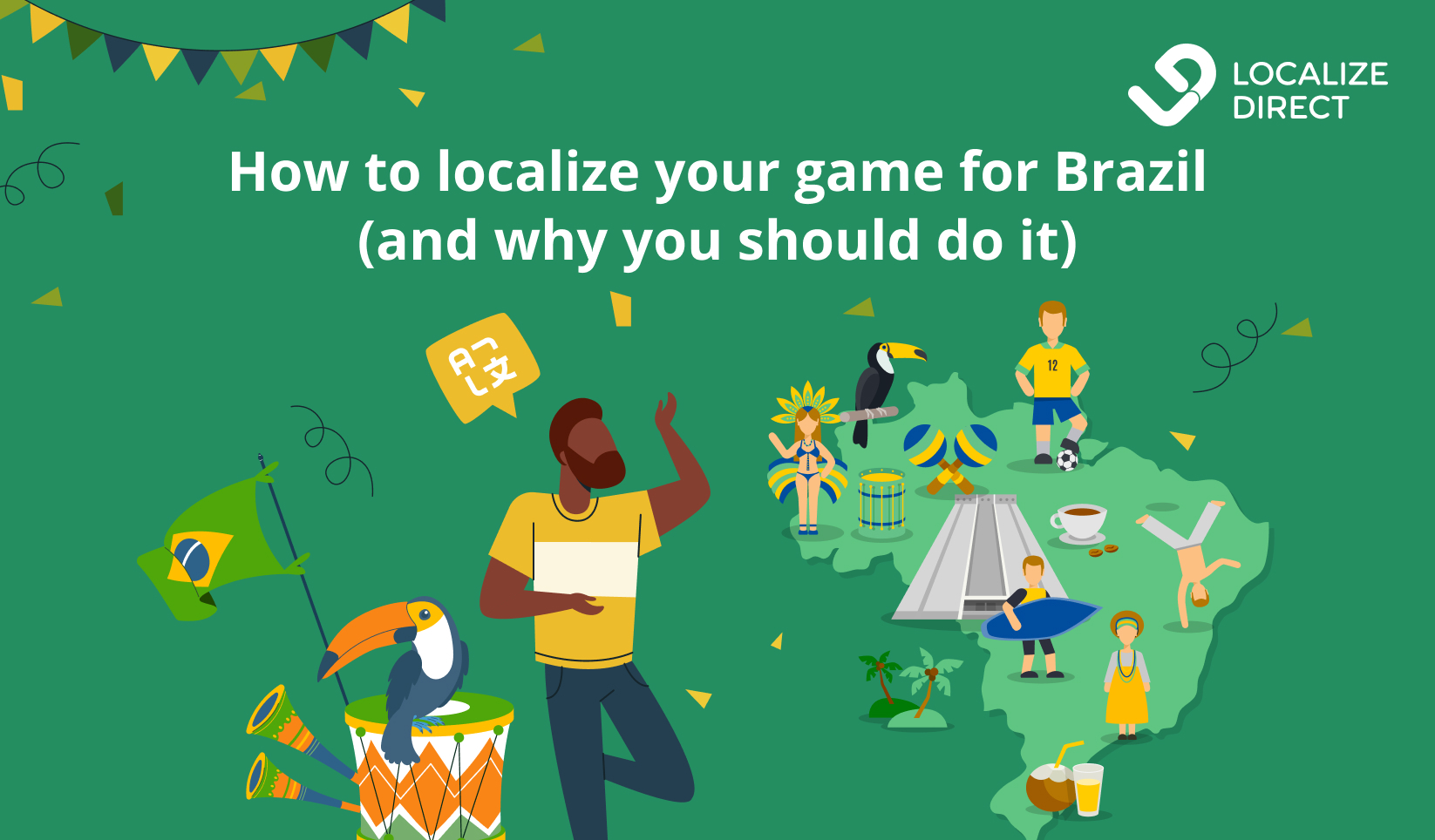
In this post, we’ll give an overview of the gaming market in Brazil and why it might make sense for you to enter it. We’ll also provide 8 proven tips from our localization specialists that will make the BR-PT localization easier and help you avoid common errors.
KEY TAKEAWAYS
WHAT’S COVERED:
By different estimations, Portuguese is in the top 8 or 6 of the most spoken languages in the world. However, it’s important to understand that there are many differences in grammar and vocabulary between European Portuguese (spoken in Portugal) and Brazilian Portuguese. The Brazilian Portuguese language specifically has over 215 million speakers, which is obviously a huge global segment to be aware of.
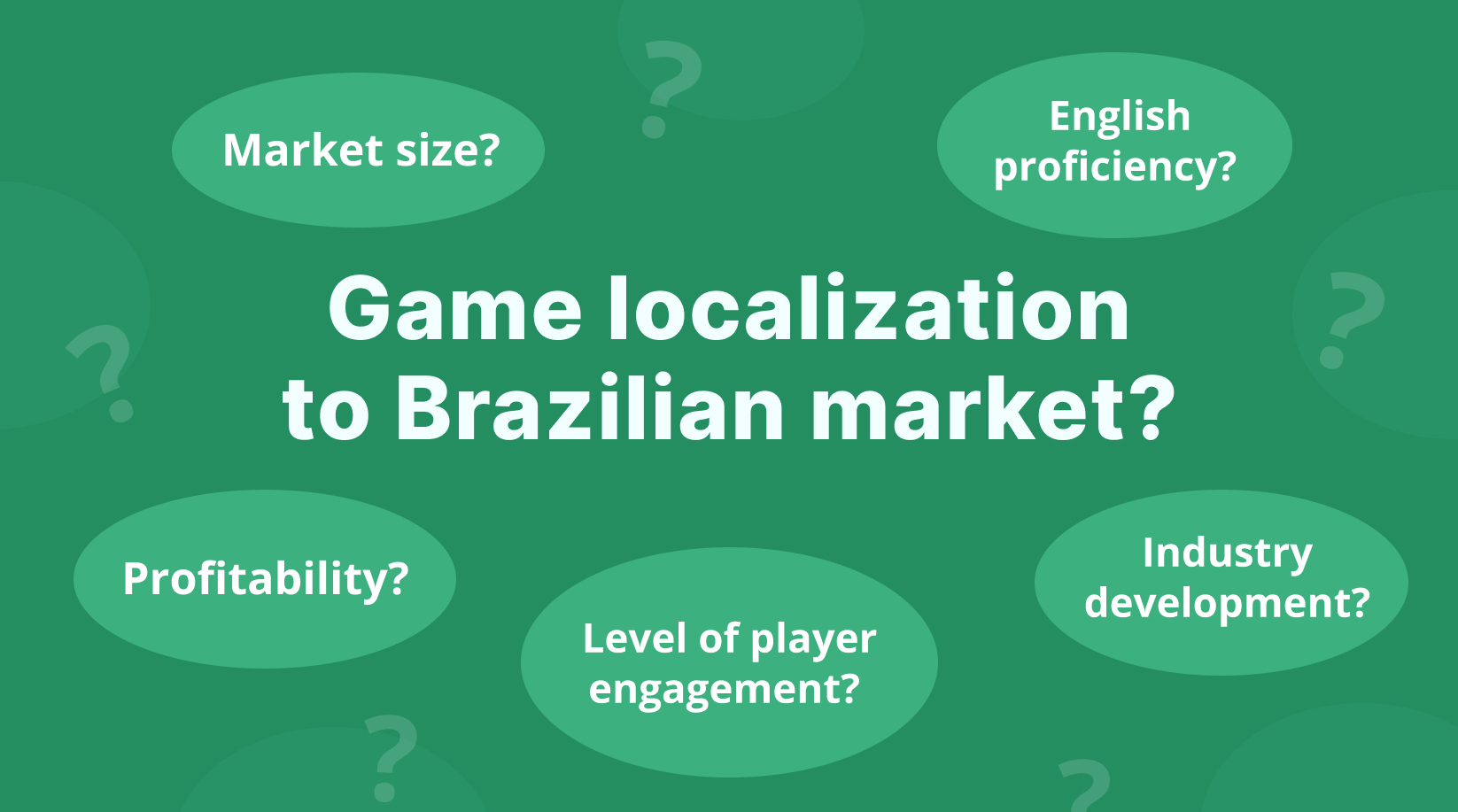
Here are some facts and stats that can convince you to invest in Brazilian game localization:
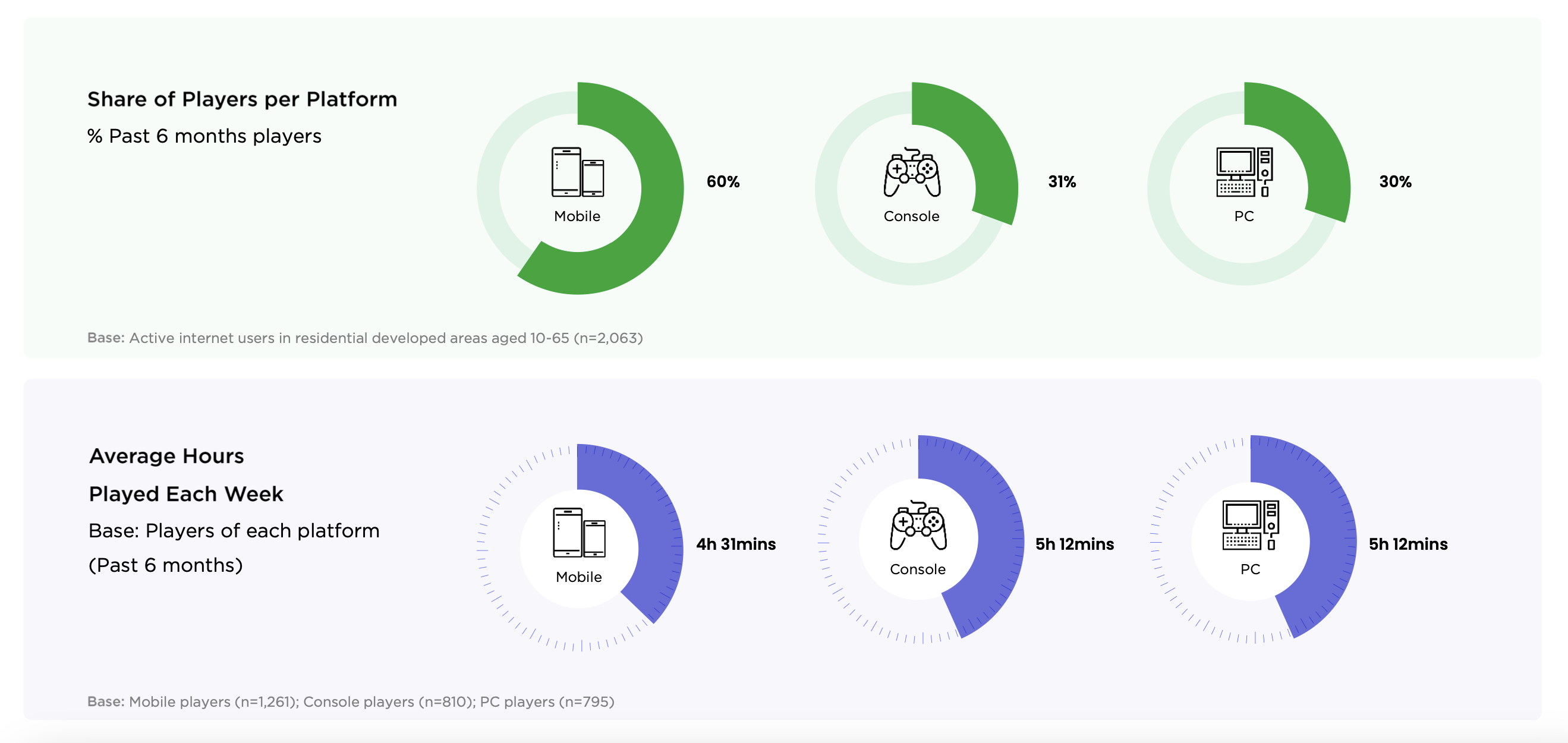
Statistics on platform usage and average playing time of Brazilian gamers. Source: Newzoo
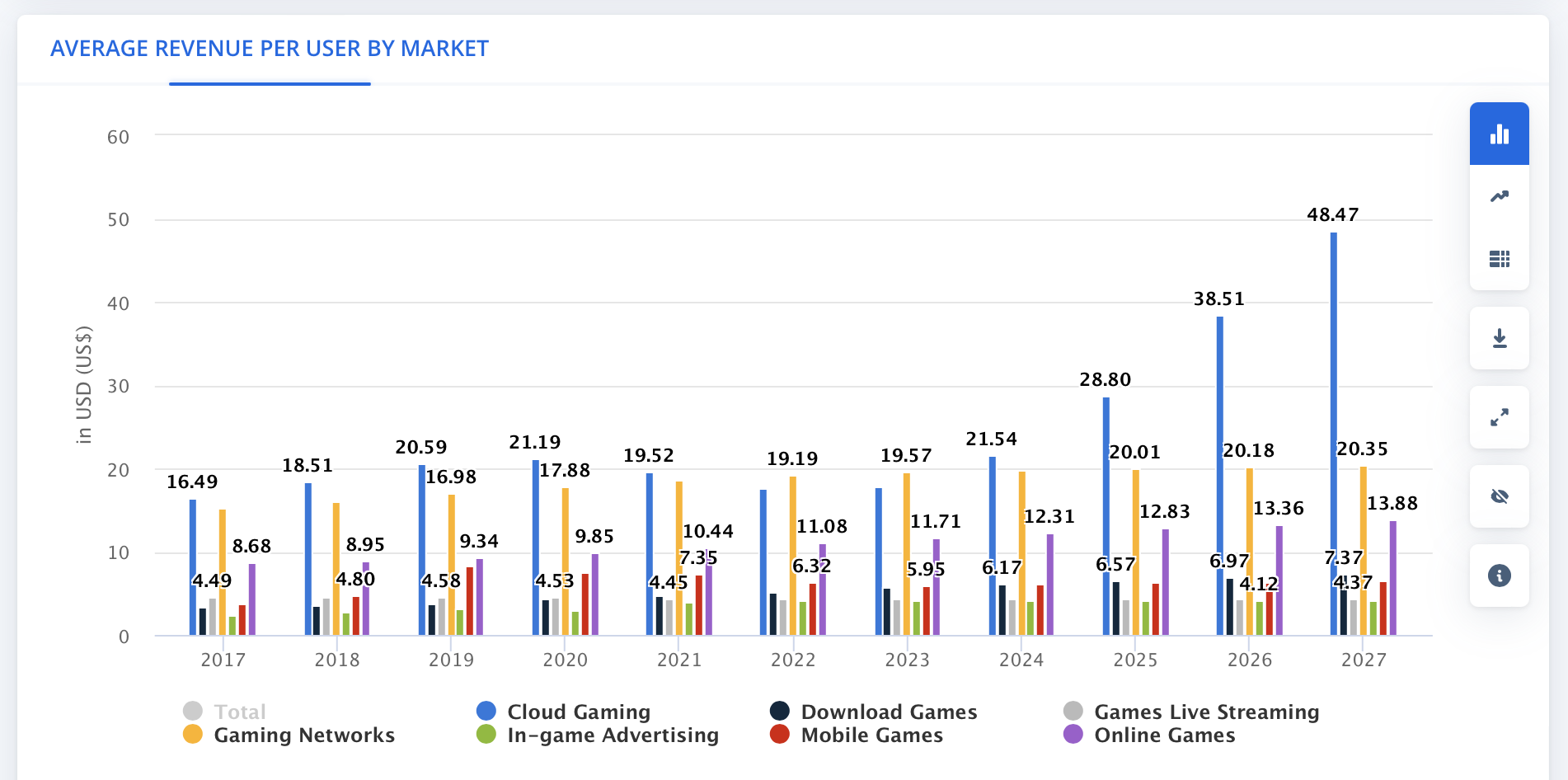
Average revenue per user in different gaming segments. Source: Statista
Players are often asking for Brazilian localization or complain about the lack of one on social media:
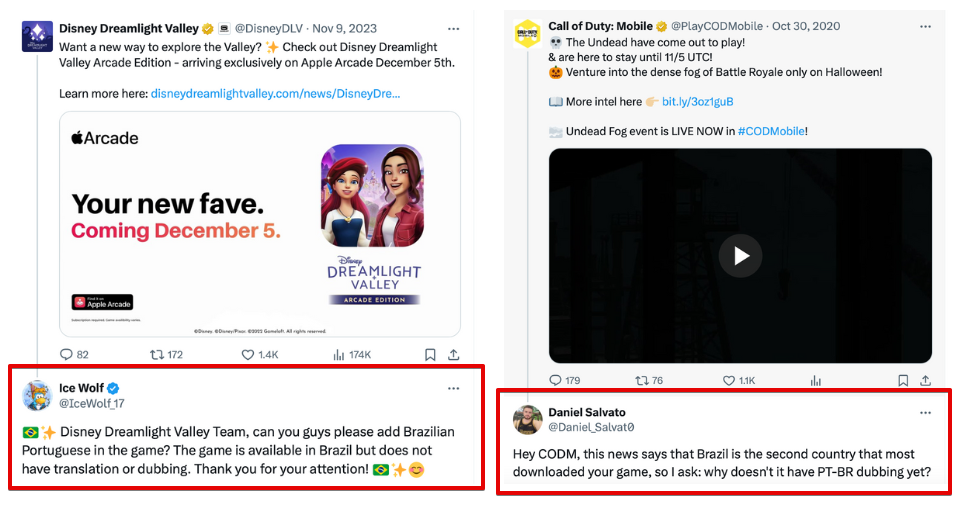
Brazilian users asking companies to localize games to BR-PT. Source: Twitter
According to Newzoo, 43% of Brazilian players are paying for games or in-game content. The major motivations for paying for games are:
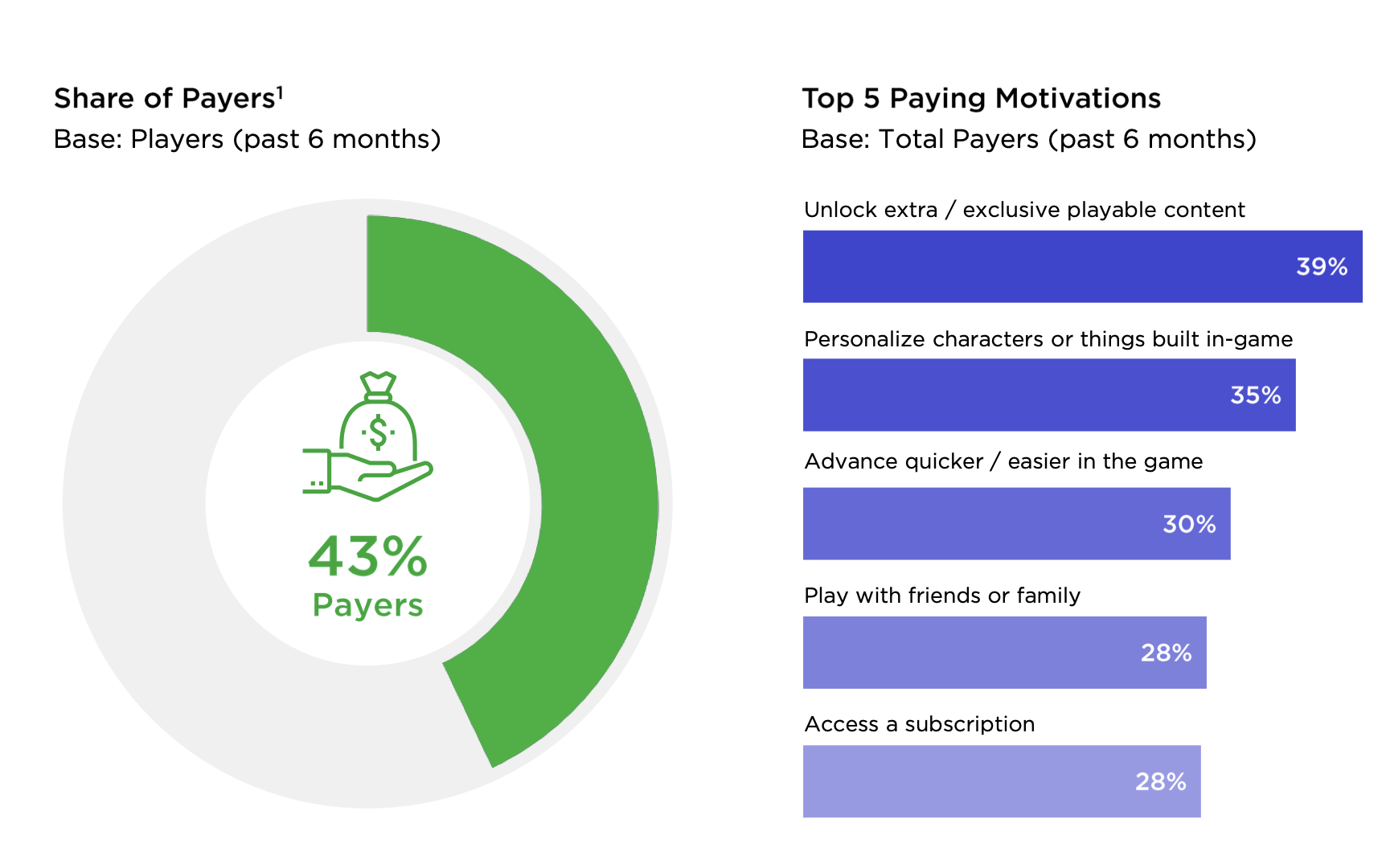
Top factors that motivate Brazilian players to pay for games. Source: Newzoo
Consider acting on these motivating factors and implementing the extra content or customization capabilities that might increase your revenue.
According to the Newzoo report, the top 3 game genres among PC and console gamers in Brazil are shooter, adventure, and sports. RPG, sandbox, and racing games are also featured among the top 10 genres.
If we look at the most popular mobile games in Brazil, the situation is a bit shifted towards simulation and sandbox games:
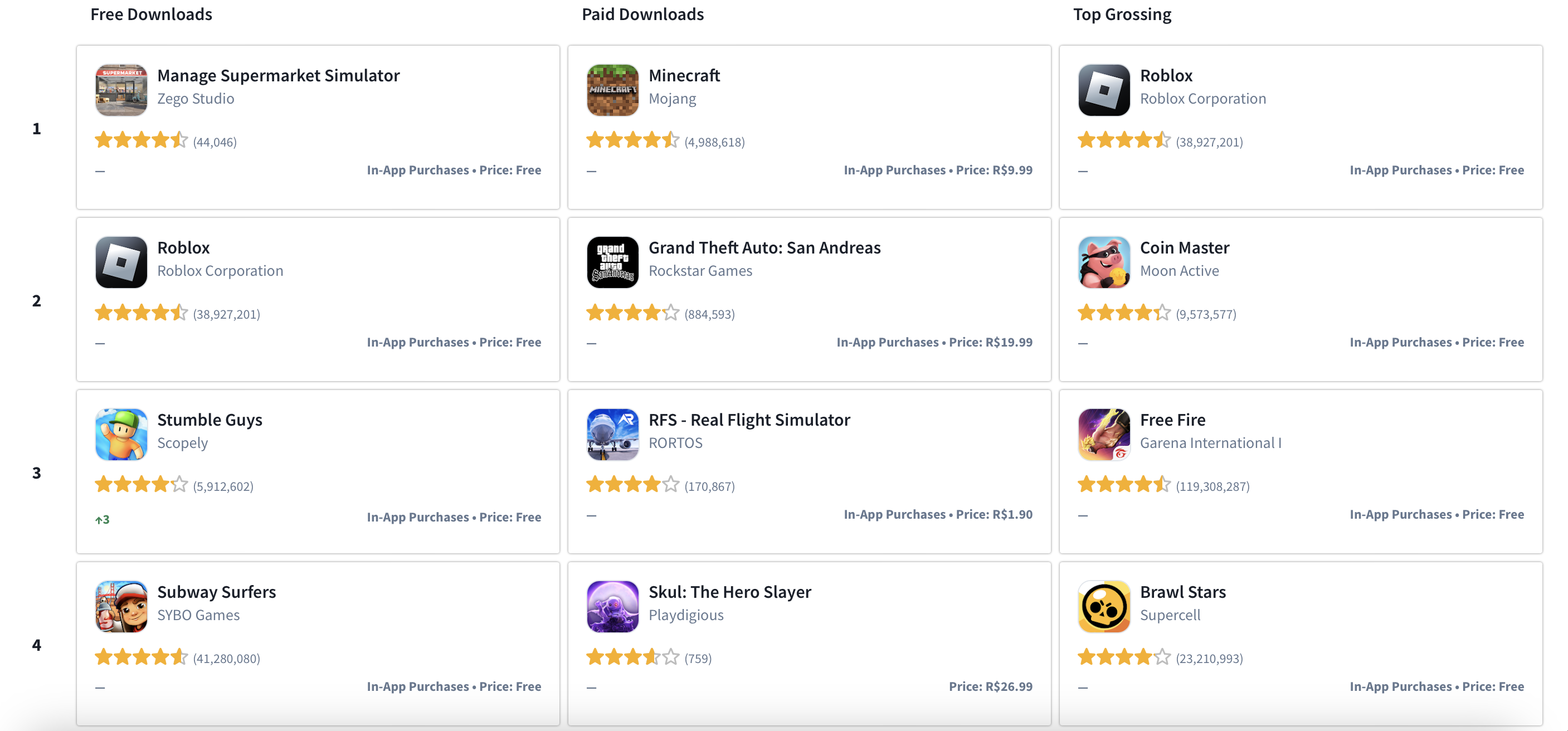
The most popular mobile games in Brazil on Google Play. Source: Sensor Tower
It’s also been estimated that Brazil provides the 3d biggest audience for esports tournaments. Apart from the increasing number of active players, there’s a wide community of Brazilians who enjoy watching esports events. For instance, the final of the 2019 Brazilian League of Legends Championship was watched by 336,000 viewers.
With that in mind, you can gain success in the Brazilian market with practically any popular game genre. The key to success, however, lies in the localization and culturalization of the product. Let’s see what major things you need to be aware of in order to properly translate your game into Brazilian Portuguese and make it relevant to the Brazilian audience.
We’ve asked a few professional translators about the common problems they see with Brazilian localization and the advice they would give to companies looking to enter the Brazilian market.
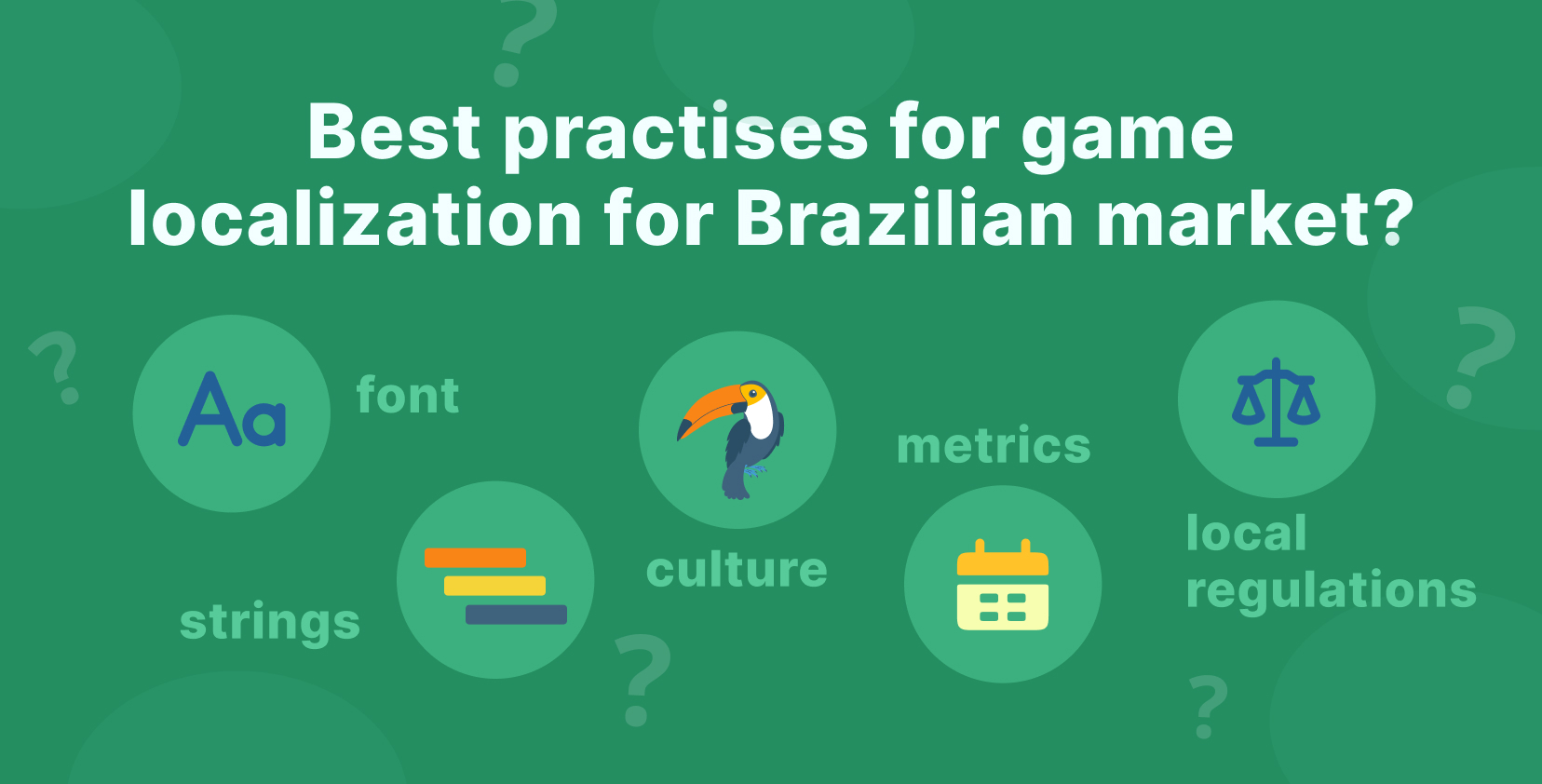
The Portuguese language spoken in Portugal is very different from the one spoken in Brazil. When planning your localization process, hire translators and experts who are specifically from Brazil or know about the linguistic nuances.
Brazilian and European Portuguese differ on different levels. For instance, Brazilian Portuguese is more open to influences from other languages and thus features some common anglicisms or other borrowed words.
Apart from the vocabulary and word choice, there are some grammatical differences as well. One of the examples is the placement of pronouns: they come after the verb in European Portuguese and before the verb in Brazilian Portuguese.
Moreover, the phonological rhythm is different, which is crucial to understand for game dubbing. Brazilian Portuguese tends to build its rhythm around syllables, which results in a smoother, melodic flow, while European Portuguese is characterized by a more monotonous intonation.
There might be agencies and translation specialists offering you the localization into the so-called neutral Portuguese, suitable for both PT and BR locales, but don’t fall for that trap and localize for each locale individually.
Here’s an example of how differently a game menu looks like for PT and BR audiences:
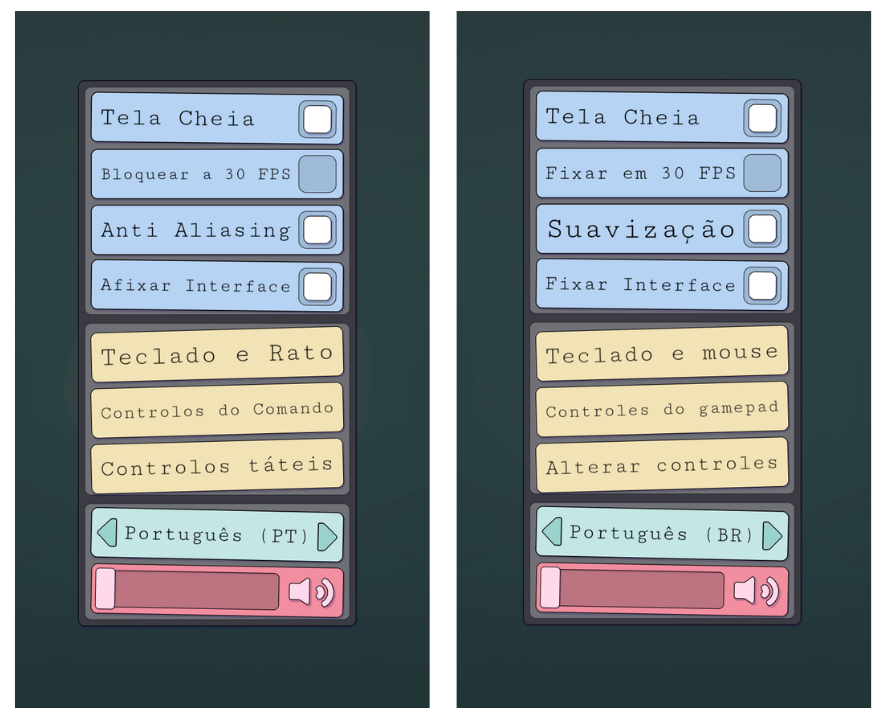
Source: Townscaper
It’s essential to choose fonts that support all accented letters of Brazilian Portuguese. Make sure that your game has international character encoding (UTF-8) and features appropriate fonts.
Portuguese letters with diacritical marks can completely change the meaning of the phrase. For instance, a very common word “está” is a form of a verb, while when it’s used without the mark (“esta”), it becomes a pronoun, and thus mixing one with another might lead to incorrect grammar or incomprehensible sentences.
According to Think With Google, designers of apps that are localized for Brazil normally use typefaces like Helvetica, Baskerville, Times, and Gotham. Here’s an illustration of how the proper and improper choice of font is reflected in the BR-PT interface:
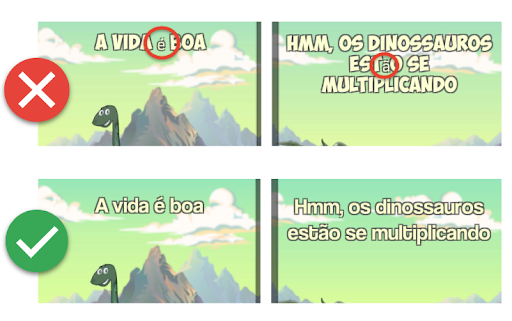
Choice of fonts for BR-PT localization. Source: Think With Google
This piece of advice is not unique to Portuguese. Compared to English, most other languages will have longer translations, and the interface of your game should be ready for text expansion.
To ensure that longer Brazilian translations won’t affect the look of your game and the meanings of content in it, do the following:
>> Explore how to manage string translation effectively
Small details like date or currency formats are those little touches that often define the quality of localization. Never hardcode any units that might be used differently based on a country or region.
In Brazil, the major metrics are used in the following way:
It’s also crucial to use the local currency on the websites and stores that will be selling your game. A consumer survey by EBANX revealed that the majority of Brazilians prefer local payment methods and wouldn’t make a purchase if the USD currency is presented as the only option.
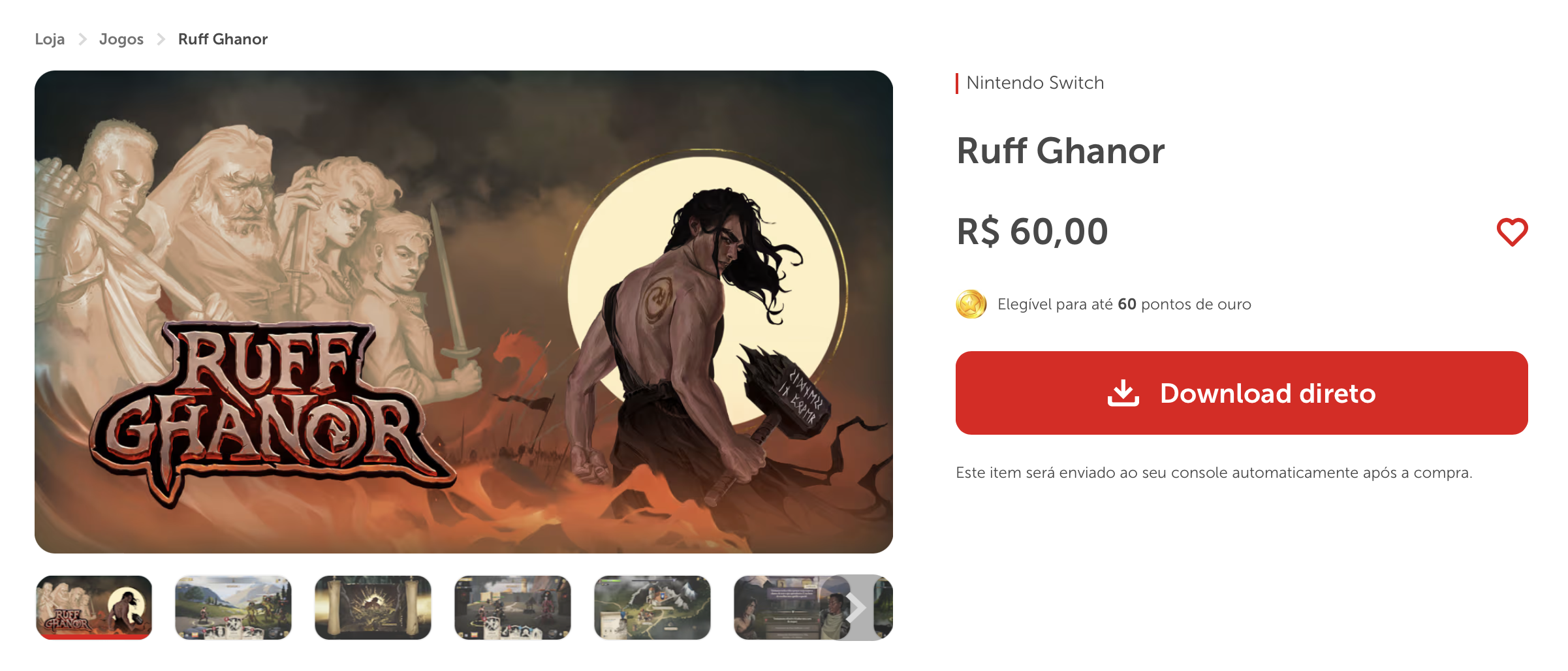
Local Brazilian currency on the game store. Source: Nintendo
Even though Brazil isn’t known as a country with a harsh game admission and content control process, there have been instances of game bans. For instance, globally popular games like Mortal Kombat and Counter-Strike were banned for the depiction of violence and cruelty.
If your game features some content that might not be suitable for all age groups, carefully examine the requirements of the Brazilian advisory rating. It’s mandatory to go through game classification, and the three themes that are scrutinized are sex, drugs, and violence. In the end, your game might fit into one of the six age categories: L (general audience), 10, 12, 14, 16, and 18 (not recommended for minors under 10, 12, 14, 16, and 18 respectively).
Brazil is a huge country, and slang might vary from one municipality to another, or even differ from one city to another. If you want to add some spice to your dialogues with local slang, use only commonly understood expressions or focus on a particular region if it fits the nature of your game and characters.
The localization of in-game content is a complex venture, but once it’s done, it doesn’t mean that your game is ready for launch. You need to research the local market to prepare marketing and advertising activities as well.
The best thing to do here is to partner with a local agency that knows everything about current trends and perceptions of the local audience. You can also engage local stars for a bigger impact.
The range of possibilities is endless. For example, when Nintendo localized the Super Mario game for Brazil for the first time, they encouraged people to share the hashtag #nintendobrazil and created videos that showcased the localized gameplay with commentary from a native speaker.
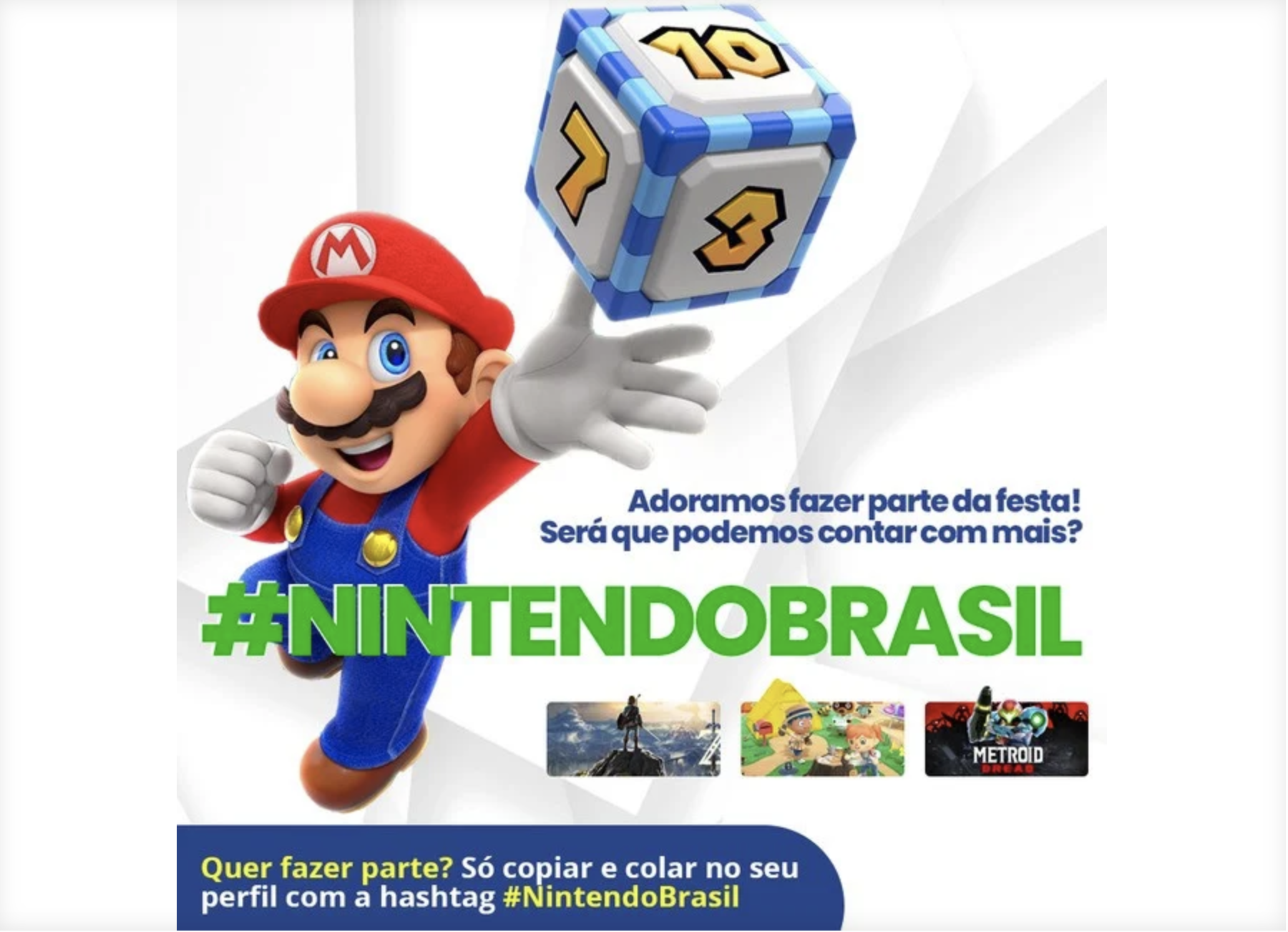
Promotional poster of Nintendo’s first Brazilian localization. Source
Seasonal events like the Carnival are the major highlights of life in Brazil, and you’ll be missing promotion opportunities if you don’t think of seasonal content or seasonal marketing campaigns.
For example, you can create a separate level, reward, or character skin dedicated to Carnival. Some games even provide Carnival-themed content to all audiences, but it will be more attractive to Brazilian players.
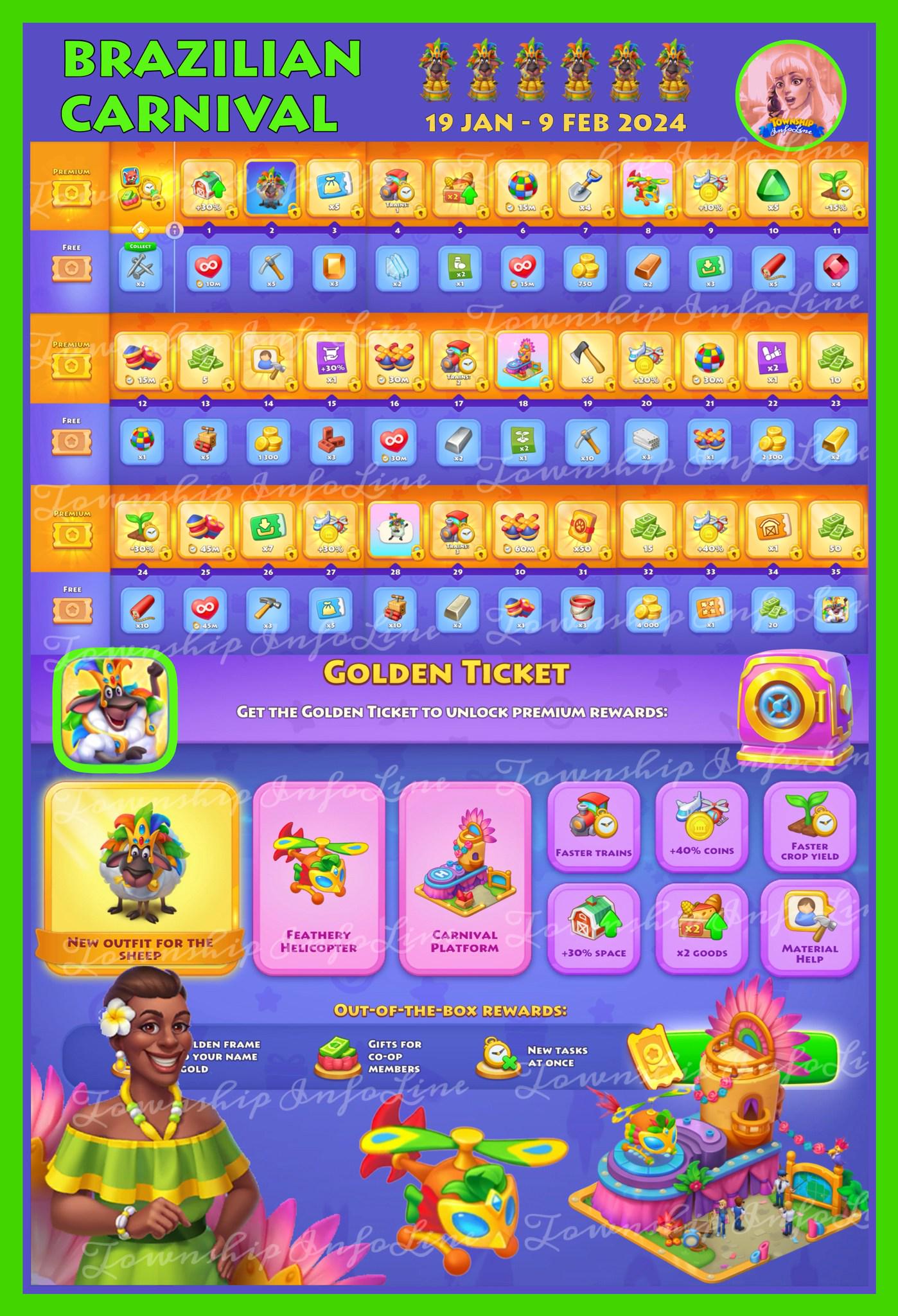
Carnival-themed content in the Township game. Source
Also, note that seasons generally work differently in Brazil compared to the US and Europe. For instance, if your game features some themed levels for, say, Christmas, it would be irrelevant to use snowy imagery, as December is the beginning of summer in Brazil.
Brazil offers a potentially very profitable market, the biggest one in Latin America. If you’re looking for regions to expand the global reach of your game, Brazil, with its 100+ million gamers, is definitely worth considering.
But to win the hearts of local players, you need to be prepared for the localization and take into consideration a lot of linguistic and cultural nuances:
Hope this information helps you make a decision and enter a new market without experiencing potential pitfalls or mistakes. If you’re looking for professional localization services, drop us a line, and we’ll discuss the aspects of Brazilian culturalization relevant to your game.
Getting ready to localize your game? Learn what to consider before starting a localization project, from setting up your file to creating a style guide.
Some Asian countries are absolute global leaders in the gaming industry: for instance, China, Japan, and South Korea are all in the top 4 by revenue after the US. Other markets (Southeast Asia and the Middle East) are some of the most rapidly growing ones, especially in the sector of mobile gaming.
